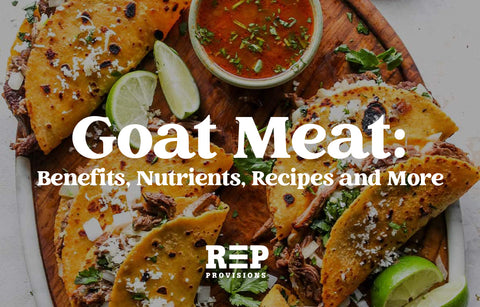The Evolution of Food and Families
My grandmother’s family owned a seed company in a small town in upstate NY, along lake Erie. She’d pick peas from the vine and had no indoor plumbing until the age of 9. She spent nearly all her life there – ninety years.
Although she didn’t have much – she made what she did have last. Fruits and veggies came and went with the seasons – processing foods meant more traditional methods like canning or fermenting.
Modernized society lives in stark contrast – traveling more than ever, while daily life itself has grown increasingly sedentary. Supermarkets defy seasonality – always stocked with the same: strawberries, avocados, bananas.
According to a study published in Frontiers in Nutrition, more than 60 percent of caloric intake in the U.S. now comes from ultra-processed foods – which means ultra-long shelf lives.
When it comes to our diet, we have more choices than ever before. Let’s explore the farming practices, nutritional value, health implications, and where we go from here for us within today’s food system.
How did we get here? The Rise of Industrial Agriculture
While factory farming and monoculture farming developed somewhat independently, they both reflect broader trends in industrial agriculture characterized by efficiency, specialization, and intensification.
Industrial Agriculture:
The rise of industrial agriculture represents a significant departure from the farming practices of previous generations. Unlike the small-scale, diversified farms of our grandparents' era, industrial agriculture is characterized by large-scale monoculture production, mechanization, and heavy reliance on synthetic inputs such as fertilizers and pesticides.
Heavily influenced by government subsidies, farmers are incentivized to grow soy and grains like corn. This overabundance leads to these ingredients trickling down the entirety of our food system from livestock feed to ultra processed foods.
Factory Farming:
Factory farms, also referred to as Concentrated Animal Feedlot Operations CAFOs, are characterized by the intensive confinement of livestock in controlled environments, and began to emerge in the late 19th and early 20th centuries. Animals raised in confinement are fed highly unnatural diets of grains and soy, hormones, and antibiotics.
While this shift has led to increased efficiency and productivity, allowing for the mass production of food at lower costs – it has also brought about many environmental and social challenges.
Nutritional Decline in Industrialized Food
Your food's nutritional value is not the same as your grandparents. While we’re producing more food than ever before, evidence shows nutritional value in both our produce and meats are declining.
Vegetables and Fruit:
According to nutritional data compiled by the U.S. Department of Agriculture from both 1950 and 1999, there have been observed decreases in the levels of protein, calcium, phosphorus, iron, riboflavin (vitamin B2), and vitamin C in 43 different vegetables and fruits over the past fifty years.
Conventional Meat:
Factory farming in the meat industry is associated with changes in the nutritional profile of meat products. Nutritionists agree eating a 1:1 ratio of omega-6 to omega-3 fatty acids is crucial for optimal health and wellness.
The problem is that beef from conventional agricultural practices grows faster but the result is unnatural and unhealthy fat ratios. USDA conventionally raised beef has 800% more omega-6’s than regenerative beef. Diets high in omega-6’s lead to inflammation and chronic disease.
Compare the nutritional profiles of regenerative beef, grass-fed beef, and conventional beef here.
Ultra-processed foods and seed oils:
While the exact origin of ultra-processed foods cannot be pinpointed to a specific date, their prevalence and impact on global diets emerged somewhere in the latter half of the 20th century.
Processed foods have been around for centuries, however the term "ultra-processed" specifically refers to a category of food products that undergo extensive industrial processing and contain numerous additives, preservatives, and artificial ingredients.
Ultra-convenient and ultra-processed foods are one of the major differences between us and our grandparents' diets. While earlier generations used predominantly animal lards as cooking oils, today, Americans consume 36 pounds of cooking oils per year – more than three times as much as in the early 1970s.
In monoculture agriculture there are a certain crops dominate both in terms of production volume and their widespread use in processed foods and seed oils including:
- Corn (Maize): Corn is one of the most extensively cultivated monoculture crops worldwide. It serves as a staple food in many diets and is also widely used in processed foods and as a feedstock for livestock. Corn-based ingredients such as corn syrup, corn starch, and cornmeal are prevalent in processed foods.
- Soybeans: Soybeans are another major monoculture crop, valued for their high protein and oil content. Soybeans are processed into various products such as soybean oil, soy flour, soy protein isolates, and soy lecithin, which are widely used as ingredients in processed foods, including baked goods, snacks, and meat substitutes. Soybean oil in particular constitutes a whopping 90% of all US vegetable oil production.
- Canola (Rapeseed): Canola is a relatively recent addition to monoculture agriculture but has become one of the most widely cultivated oilseed crops globally. Canola oil is prized for its neutral flavor and high smoke point, making it a popular choice for cooking oils and as an ingredient in processed foods.
- Palm Oil: Palm oil is derived from the fruit of the oil palm tree and is the most widely consumed vegetable oil globally. It is used extensively in processed foods, cosmetics, and household products due to its versatility, stability, and low cost. However, the production of palm oil has been associated with deforestation, habitat destruction, and environmental degradation in tropical regions.
Consuming such high rates of seed oils has severe consequences – it’s even altering the genetic makeup of our brains. Read on 7 reasons seed oils are bad for your health here.
Health Implications of Conventional Agriculture
The prevalence of conventional agriculture, which includes industrial agriculture and factory farming, in our food system has significant health implications that extend beyond the nutritional content of our food. Factory farming, in particular, has become synonymous with efficiency and mass production, but it comes with several health concerns:
- Increased Risk of Chronic Diseases: Factory farming practices, which prioritize quantity over quality, have been associated with an increased consumption of processed meats and animal products high in saturated fats and low in essential nutrients. These dietary patterns have been linked to an elevated risk of chronic diseases such as obesity, type 2 diabetes, cardiovascular disease, and certain cancers.
- Antibiotic Resistance: Factory farming relies on the routine use of antibiotics to promote growth and prevent disease in crowded, unsanitary conditions. Overuse of antibiotics contributes to the development of antibiotic-resistant bacteria, posing a serious threat to human health.
- Hormone and Antibiotic Residues: Using growth-promoting hormones and antibiotics in livestock production results in residues in meat, dairy, and other animal products. Chronic exposure to these residues may have adverse health effects, including disruptions to hormonal balance and increased risk of antibiotic resistance.
- Environmental Pollution: Factory farming generates large amounts of waste, including animal manure and runoff from feedlots, which contaminates soil, waterways, and air with pollutants such as pathogens, hormones, antibiotics, and heavy metals. This pollution poses risks to human health through contaminated drinking water, air pollution, and exposure to pathogens.
What's Next? The Resurgence of Regenerative Agriculture
A renewed interest in regenerative agriculture promises hope for our planet and our health. Instead of swimming in a sea of nostalgia – it blends modern technological advancement with the tried and true practices of our ancestors.
But what exactly is regenerative agriculture?
Regenerative Agriculture: Holistic Land Management
- Philosophy, Art, and Science: Regenerative agriculture embodies a holistic approach to farming that aligns with the principles of nature. It integrates traditional wisdom with scientific understanding, recognizing the interconnectedness of all living organisms within ecosystems.
- Mimicking Nature's Design: Central to regenerative agriculture is the concept of mimicking nature's design. By observing and imitating natural processes, such as nutrient cycling and biodiversity, farmers can create resilient and productive agricultural systems.
- Enhancing Biodiversity: Responsibly grazing livestock on regenerative farms promotes plant and animal biodiversity. Animals play a vital role in ecosystem health by aerating soil, dispersing seeds, and cycling nutrients, contributing to overall ecosystem resilience.
- Soil Health: Regenerative agriculture prioritizes soil health as the foundation of all ecosystems. By enriching soil with organic matter from manure and compost, farmers foster a thriving soil microbiome without the need for chemical fertilizers, herbicides, or pesticides.
Regenerative Agriculture: A Nutrient-Dense Alternative
- Greater Nutrient Density: Regenerative foods are recognized for their higher concentrations of essential minerals, vitamins, and nutrients compared to conventionally farmed foods. By nurturing healthy soil ecosystems, regenerative practices result in crops with superior nutritional profiles.
- Monocultures and Nutrient Deficiency: Monocultures and factory farming contribute to nutrient deficiency in crops and livestock. Regenerative agriculture addresses this issue by fostering diverse cropping systems and rotational grazing practices that enrich soil and enhance nutrient availability.
- Heart Health Benefits: 100% grass-finished beef raised on regenerative farms offers significant heart health benefits due to its balanced omega-3 to omega-6 fatty acid ratio. This natural balance contributes to cardiovascular health and overall well-being.
Regenerative Agriculture: Animal Welfare
- Pasture-Raised Livestock: Animals raised on regenerative farms enjoy natural diets and living conditions. With access to sunlight, fresh air, and open pasture, these animals lead healthier and more fulfilling lives, which translates to higher-quality meat products.
- Antibiotic and Hormone-Free: Regenerative farmers prioritize animal welfare and environmental stewardship by avoiding the use of antibiotics, hormones, mRNA vaccines, pesticides, and GMOs. By providing a natural environment and diet, regenerative practices support the overall health and well-being of livestock.
Regenerative Agriculture: Farmers and Ranchers
- Food Sovereignty: In the same vein as our grandparents' small-scale and diversified farms – a core tenet of regenerative agriculture is food sovereignty. Food sovereignty challenges the dominance of large agribusiness corporations and industrial agricultural practices that prioritize profit over people and the environment. Instead, it advocates for agricultural systems that prioritize the needs and interests of local communities, small-scale farmers, and indigenous peoples.
- Economic Opportunities: Regenerative agriculture offers farmers and ranchers opportunities to diversify their production, leading to higher incomes and greater job security. By transitioning from monoculture production to diversified systems, farmers can cultivate resilience and adaptability in the face of market fluctuations and environmental challenges.
Regenerative Agriculture: Systemic Solutions
- Rooted in Research and Indigenous Wisdom: Regenerative agriculture draws on decades of scientific research and traditional knowledge from indigenous communities. By integrating modern science with ancestral wisdom, regenerative practices offer systemic solutions to pressing environmental and social challenges.
- Building Resilience: Keeping soils covered and implementing rotational grazing practices build resilience to extreme weather events such as floods and droughts. By sequestering carbon in the soil and mitigating the risk of invasive species and wildfires, regenerative agriculture contributes to climate adaptation and mitigation efforts.
- Promoting Environmental Health: Eliminating the use of pesticides in regenerative farming enhances air and water quality, benefiting both human health and ecosystems. By restoring balance to agricultural ecosystems, regenerative practices foster a healthier planet for current and future generations.
Not your Grandma’s Diet, Something Better
Like the green light at the end of Daisy Buchanan's dock in the Great Gatsby, we must know the danger as well as the impossibility of trying to recreate the past.
Regenerative agriculture checks that human impulse – instead offering us a path forward which invites the wisdom gained while also infusing all the best modern technology and scientific inquiry have to offer.
To learn more about regenerative agriculture and the work we’re doing at REP Provisions – please visit our website here.




Comments (0)
There are no comments for this article. Be the first one to leave a message!